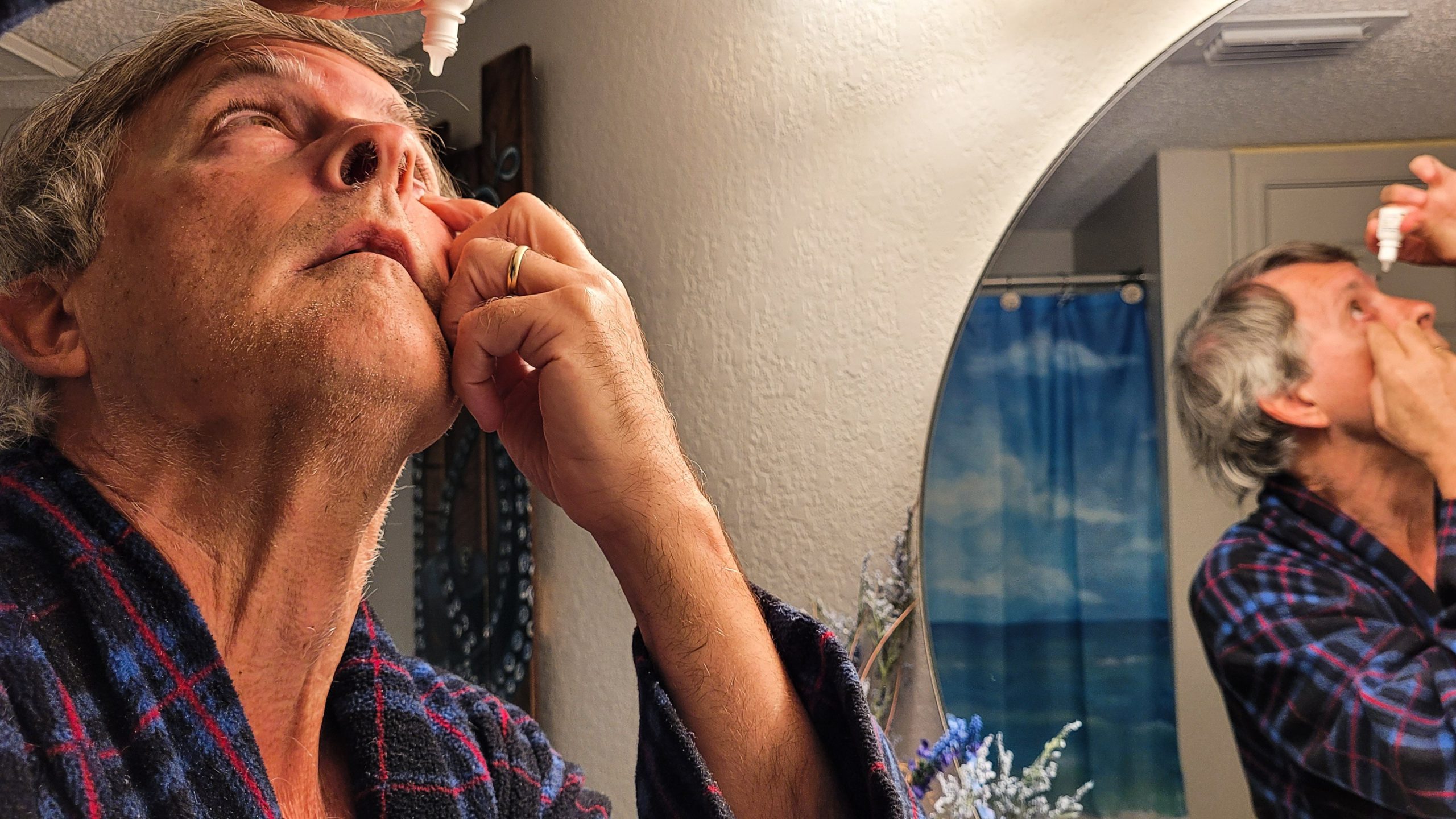A new therapeutic approach for ptosis
Until recently, there were few treatment options besides surgery for patients with ptosis, also known as blepharoptosis or drooping eyelids. That changed in 2020 when the FDA approved Upneeq eye drops (oxymetazoline HCL 1%), which can improve appearance and functioning for patients with mild to moderate ptosis without surgery.
Here’s an overview of this condition and how I use Rendia with my patients to explain how this innovative new therapy works.
Etiology and subtypes
Ptosis can affect patients of all ages, from newborns to the elderly, and has several causes. Ptosis can be either acquired or congenital and it can present as either unilateral or bilateral drooping of the eyelid. It is caused by weakness of the levator palpebrae superioris and Müller’s muscle, which are responsible for lifting the eyelid, or by a pathology of the nerves that affect these muscles.
Acquired ptosis has several causes that need to be ruled out and addressed before considering a therapeutic agent to lift the eyelids.
Acquired ptosis can be divided into several subtypes. The most common cause is aponeurotic, which may result from stretching or dehiscence of the levator aponeurosis. These anatomic changes may be age-related. Acquired ptosis can also be neurogenic, such as from a third nerve palsy or Horner’s syndrome, or it can be myogenic as in the case of myasthenia gravis or myotonic dystrophy. Finally, ptosis can be mechanical, resulting from an eyelid mass ranging from a neurofibroma to scarring after trauma or surgery.
These causes need to be ruled out and addressed before considering a therapeutic agent to lift a patient’s upper eyelids.
Upneeq to the rescue
Provided you’ve ruled out a serious cause for the ptosis, medical treatments such as traditional Botox (botulinum toxin) injection or Upneeq (oxymetazoline) drops can be administered or prescribed in mild to moderate cases.
In clinical trials, Upneeq was well-tolerated and significantly improved the superior visual field.
Upneeq was FDA approved as a once daily drop for the treatment of acquired blepharoptosis. Oxymetazoline is an α1 and partial α2 adrenergic agonist capable of contracting Müller’s muscle as a sympathomimetic agent. In Phase 3 clinical trials, the treatment was well tolerated and significantly improved the superior visual field, making this emerging therapy a preferred non-surgical treatment for upper eyelid ptosis.
Educate patients with Rendia
Rendia is a valuable tool to educate ptosis patients about their condition and treatment options. I find that it saves time, increases patient understanding and often results in higher conversions and adherence to treatment. Since Upneeq can be prescribed through RVL Pharmacy or sold via a doctor’s office for profit, it pays to take the time to educate patients about this new treatment option.
Educating patients with Rendia increases patient understanding of ptosis and often results in higher conversions and adherence to treatment.
I like to start with the Rendia library. I can pull ptosis videos and animations into a playlist to educate patients in the reception area or send via email before or after their examination. There is a wonderful ptosis patient quiz animation that maintains their interest and teaches them what it is, as well as an animation explaining surgical treatments. Or you can go to Exam Mode as I prefer to do, and show a ptosis animation, highlight key points, and circle the eyelid or fissure area. The point of view (POV) animation is excellent in showing the visual field loss effects of ptosis. It’s a true motivator for patients when they realize just how much vision can be lost.
Primary eye care providers see ptosis most often, yet we’ve had little opportunity to treat this condition shy of referring patients to an oculoplastic surgeon for blepharoplasty. This new non-surgical therapy, combined with patient education using Rendia, can be an extremely valuable addition to your practice.

